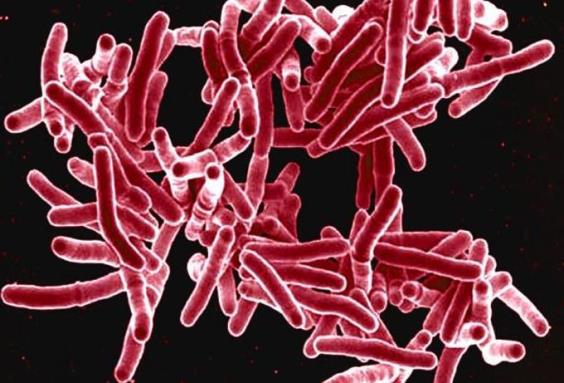Tuberculosis (TB) is a chronic infectious disease of humans (as well as animals) primarily involving the lungs. It is caused by the tubercle bacillus Mycobacterium tuberculosis and is transmitted by pathogenic airborne droplets. Approximately 5–10% of individuals infected with the TB bacterium progress to develop the active disease, and these individuals must be treated with a combination of antibiotics, taken for several months, for effective elimination of the disease. However, treatment failure or relapse is on the rise as a result of drug-resistant strains of the M. tuberculosis organism. See also: Antibiotic; Antibiotic resistance; Antimicrobial resistance; Bacteria; Bacteriology; Clinical microbiology; Drug resistance; Lung; Medical bacteriology; Microbiology; Mycobacterial diseases; Pathogen; Tuberculosis

Tuberculosis infects at least 10 million people annually around the world and is particularly prevalent in certain regions of Africa and Asia. Approximately 1.3–1.6 million individuals die per year from tuberculosis or complications related to the disease. In fact, more individuals are killed per year as a result of tuberculosis than any other specific infectious disease. Despite improvements in providing treatment regimens to areas with limited medical resources, a major threat to the effective management of tuberculosis is the growing resistance of the M. tuberculosis bacterium to various drug therapies. Many bacterial strains have mutated so dramatically that they have been designated as multidrug-resistant (MDR) or extensively drug-resistant (XDR) strains of TB. Patients with MDR TB fail to respond to treatment with isoniazid and rifampin (the two most effective first-line TB drugs). In contrast, individuals with XDR TB show resistance not only to isoniazid and rifampin, but also to fluoroquinolone drugs and certain second-line drugs (for example, amikacin, capreomycin, or kanamycin). With sharp increases in these types of strains, epidemiologists fear that drug-resistant tuberculosis could proliferate rapidly and globally, leading to dire outbreaks and epidemics even in areas that presently have low incidences of tuberculosis. See also: Epidemic; Epidemiology; Infectious disease; Mutation
One problematic aspect of drug-resistant tuberculosis is that it is not being specifically diagnosed. About three-fourths of all new MDR TB cases are not recognized as being the result of drug-resistant strains. Because of inadequate or time-consuming diagnostic methods, as well as the lack of facilities and financial resources to ensure the proper identification of drug-resistant strains, the majority of individuals with MDR TB or XDR TB receive inappropriate drug therapies that provide zero effectiveness. As such, the transmission and spread of tuberculosis—especially the drug-resistant varieties—will inevitably increase, creating public-health crises that can no longer be managed by the current roster of drug therapies. See also: New drug to control tuberculosis; Public health





